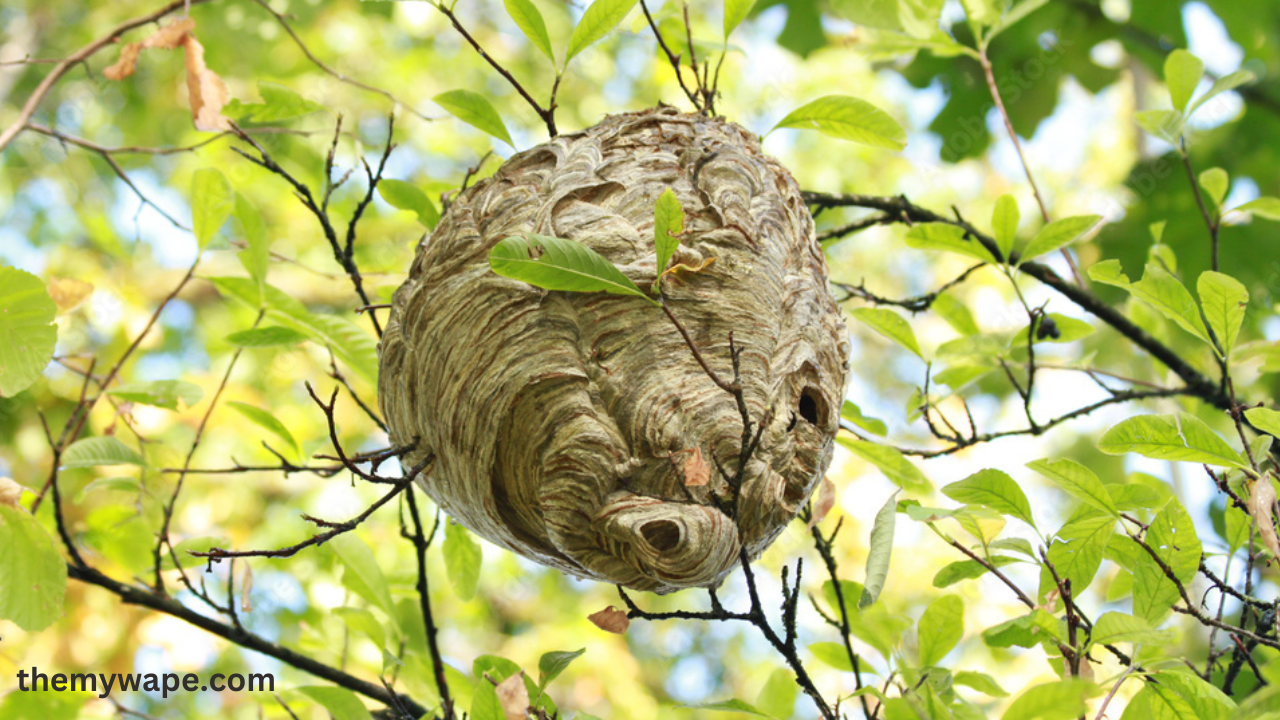Introduction
Wasps are fascinating yet often feared insects, particularly when they start building nests around our homes. “What is a wasp nest, and why is it important to understand?” Understanding wasp nests is not only crucial for your safety but also helps in appreciating these insects’ role in our ecosystem. This article will guide you through everything you need to know about wasp nests, from identifying them to managing them safely.
Table of Contents
Types of Wasps
Wasps can be broadly divided into two main groups: social wasps and solitary wasps. Social wasps, such as yellowjackets and hornets, are the ones you’re most likely to encounter, especially in nests “They exist in colonies composed of a queen, worker ants, and males.”. On the other hand, solitary wasps, like mud daubers, do not live in colonies and rarely build noticeable nests.
Common wasp species that build nests include the paper wasp, known for its umbrella-shaped nests, and the bald-faced hornet, which builds large, football-shaped nests often seen hanging from trees.
Life Cycle of a Wasp
Understanding the life cycle of a wasp can give insight into the purpose and timing of their nests. The life cycle includes four stages:
Egg Stage: The queen lays eggs in the cells of the nest.
Larva Stage: Eggs hatch into larvae, which are fed by worker wasps.
Pupa Stage: Larvae spin a cocoon and transition into pupae.
Adult Stage: Pupae emerge as adult wasps, ready to take on roles in the colony.
Structure of a Wasp Nest
“Wasps are skilled builders, constructing their paper-like nests from a combination of wood fibers and their own saliva.” The internal layout of a wasp nest is a marvel of engineering, with multiple layers of cells designed to house eggs, larvae, and pupae. The structure of the nest can vary significantly depending on the species.
Paper Wasps: Build open, umbrella-shaped nests with visible cells.
Hornets: Construct large, enclosed nests with thick walls.
Yellowjackets often build nests underground or in hidden cavities, making them harder to spot.
Where Do Wasps Build Nests?
Wasps are resourceful in choosing nesting sites, often favoring sheltered locations. Common nesting spots include under eaves, inside attics, in wall cavities, and even underground. Wasps choose these sites based on factors like temperature, protection from predators, and proximity to food sources.
Seasonal Activity of Wasp Nests
The level of activity in a wasp nest varies depending on the season.
Spring: The queen emerges from hibernation and begins building a new nest.
Summer: The nest grows rapidly as the queen lays eggs and the colony expands.
Fall: The wasp colony starts to decline, and the nest is eventually abandoned as the wasps die off or go into hibernation.
Signs of a Wasp Nest Nearby
Spotting a wasp nest early can help prevent problems. Look for visual cues like the presence of wasps flying in and out of a specific location or the nest itself if it’s visible. You might also notice behavioral changes in wasps, such as increased aggression, which can indicate a nest nearby.
Dangers Associated with Wasp Nests
Wasp nests can pose several dangers, especially if disturbed. Wasps can sting multiple times, and their stings can cause severe allergic reactions in some people. Additionally, wasps are known to be more aggressive when defending their nests, which can lead to painful encounters if the nest is too close to human activity.
How to Identify a Wasp Nest
Identifying a wasp nest involves observing the nest’s appearance and location. Wasp nests vary in size, shape, and construction, depending on the species. For instance, paper wasp nests are typically small and open, while hornet nests are larger and enclosed. Knowing the species of wasp can also help in determining the best way to handle the nest.
Preventing Wasp Nests
Prevention is always better than cure. Regular inspections of your property can help catch potential nesting sites before they become a problem. Seal any cracks or openings in walls, roofs, and eaves where wasps might enter. Using natural or chemical wasp deterrents can also discourage them from building nests in unwanted areas.
Dealing with an Existing Wasp Nest
If you find a wasp nest on your property, consider whether it poses a real threat. Some nests can be left alone if they are in a location where they won’t interfere with human activities. However, if the nest is in a high-traffic area, removal might be necessary. Safe removal methods include using wasp sprays at night when the wasps are less active or calling in professional pest control services for larger nests.
Natural Predators of Wasps
Wasps have several natural predators, including birds, spiders, and other insects like praying mantises. These predators help keep wasp populations in check, preventing them from becoming too numerous.
Environmental Importance of Wasps
Although wasps can be bothersome, they are essential to the ecosystem. Wasps are pollinators, contributing to what can be a nuisance; they play a vital role in the environmental pollination of plants and flowers. They are also natural pest controllers, feeding on insects like caterpillars and flies that can harm crops and gardens.
Myths and Misconceptions About Wasps
There are many myths about wasps, such as the idea that all wasps are aggressive or that they serve no useful purpose. In reality, most wasps are not aggressive unless provoked, and they play crucial roles in ecosystems. Another common misconception is that wasps die after stinging, which is only true for honeybees, not wasps.
Conclusion
Understanding wasp nests can help you coexist with these insects more peacefully. By recognizing the signs of a wasp nest and knowing how to deal with them safely, you can protect yourself and your property while also appreciating the essential role wasps play in our ecosystem.
FAQs
How long does a wasp nest last? A wasp nest typically lasts for one season, from spring to fall. After the winter, the nest is usually abandoned.
Can I remove a wasp nest by myself? You can remove a small wasp nest yourself with caution, but it’s best to hire professionals for larger or hard-to-reach nests.
What should I do if I’m allergic to wasp stings? If you’re allergic to wasp stings, avoid areas where wasps are active and carry an epinephrine injector in case of stings.
Are wasp nests reused year after year? No, wasps do not reuse old nests. Each spring, a new queen builds a new nest for her colony.
How can I prevent wasps from building nests near my home? Regularly inspect your property, seal entry points, and use wasp deterrents to prevent them from building nests near your home.
You can see the latest updates on : MyWape



